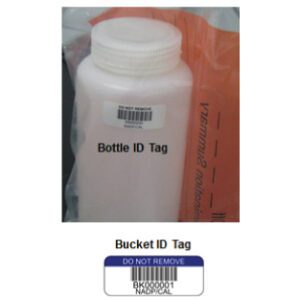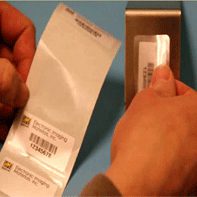

No matter how you say it, mistakes do happen. The fix might be a cover-up label.
You’ve gone and printed tons of labels – enough to last you a lifetime (or so it seems.) Then you discover that there was a typo of some sort… Or perhaps some vital information was omitted… Or you find out that your supplier made a change in your product and now you have to make some changes to your label. How about that time when your labels got applied to the wrong item? And what if you want to move your warehouse inventory around and need to re-label all your racks?
On top of that, the labels you first used have a really strong adhesive. It’s not going to be easy to remove and replace them.
This is where EIM comes to your rescue!!
We have materials that “cover up” or “block out” old labels to hide even the boldest of prints. A cover-up label has a high opacity that obscures information and graphics even on clear containers. Blind clinical studies regularly use cover-up films and papers to discretely mask manufacturing information that may distort reporting results. Security labels such as tamper evident silver VOID labels with block out features can protect important data in all types of applications. Interestingly, we even had a customer who wanted just a couple of labels to cover up an old logo he had on his metal signs!
There are different ways to get good label opacity. Our label and packaging experts can give you several options that won’t sacrifice your product’s appearance. For instance, some materials are just naturally opaque like silver polyester or thick vinyl. Otherwise, you may need to have some special additives:
• A dark, opaque tint can be added right to the adhesive
• The back of the material can be tinted grey or black before the adhesive is applied
• A metalized coating can be put on the back of a white film―again before adding the adhesive
Materials with opaque backings are more readily available than tinted adhesives and therefore minimum order requirements are smaller. Tinting an adhesive tends to better fit jobs where there are other special requirements (like the need for a particular type of adhesive) and where a very large number of labels is needed. The easiest solution may be to use a metallic or thicker―naturally dense― material that will obscure anything beneath the label.
When you ask for an opaque or cover-up label, we’re going to ask you some questions about how the labels are going to be used. For instance, we’ll need to understand the application and whether there are any environmental issues to consider such as temperature extremes, what the old label was made of and if the labels are going on prefilled containers. We will need to know if the new labels require moisture or chemical resistance and what type of printer you will be using.
As with all special labeling applications, we are going to ask you to test label samples to make sure which product is going to best meet your needs. Rest assured however, we will find you just the right opaque labeling solution and put those “mistakes” right out of sight!




